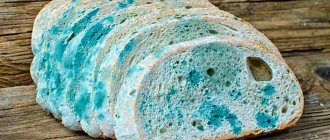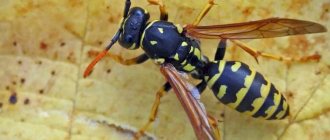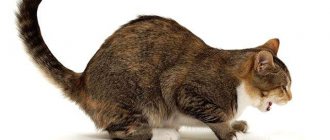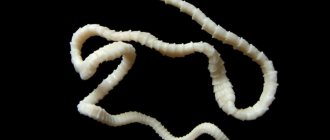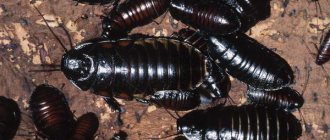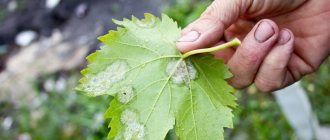0
1692
Article rating
Poultry farmers face various problems when raising birds. Parasites in chickens are one of them. These organisms live off birds. In some cases, their presence leads to death. Even a person can become infected by eating meat or eggs of patients.
Types://pro100ogorod.ru/wp-content/uploads/2018/08/parazity2-300×225.jpg 300w, https://pro100ogorod.ru/wp-content/uploads/2018/08/parazity2-90×68 .jpg 90w" sizes="(max-width: 600px) 100vw, 600px" /> Parasites in chickens
Kinds
Pests that affect chickens are divided into 2 groups: those that parasitize the feathers, and those that are inside. The first category includes the following:
Symptom mice;
- fleas;
- bedbugs;
- different types of mites – red chicken mite, northern bird mite, scabies mite, feather mite.
- roundworm;
- heterakis;
- stomach worm;
- Trichomonas;
- capillaries, etc.
Birds also suffer from helminthic infestations. The second group includes different types of helminths:
Signs of chicken infection
You can tell that a bird is infected with mites based on several signs. Parasites can be seen in different places in the poultry house - on the walls, under perches, in cracks in the floor.
p, blockquote 14,0,0,0,0 –>
If the bird has become inactive, experiences severe itching, egg production has decreased, young animals are not gaining weight well, the condition of the plumage has worsened, or bald spots have appeared on the body, it is most likely that the chickens are infected with mites.
p, blockquote 15,0,0,0,0 –>
Pay attention to the behavior of your feathered charges. If hens begin to clean their feathers more often, pluck feathers under their wings, in the cloaca area, and constantly take “sand” baths, this may also indicate an infection with feather mites and scabies mites.
Other symptoms of mites in chickens:
p, blockquote 17,0,0,0,0 –>
- weakness, apathy,
- wounds, scratches, sores on the body,
- dry frequent cough, shortness of breath,
- pallor of mucous membranes, comb, earrings,
- lack of egg production in laying hens,
- weight loss,
- refusal to eat, increased thirst.
Upon closer examination, you can see small red or black spots, small grains, droplets of blood on the feathers, body of birds or on the walls of chicken coops and perches.
p, blockquote 18,0,0,0,0 –>
Having determined that a bird is infected with ticks, you need to immediately get rid of the blood-sucking parasites, since under favorable conditions they multiply very quickly, and the infestation can become a real problem, which will result in large financial losses. Even if the mite lives on only one chicken, over time, if the bird is not cured and the ectoparasites are not removed, the entire chicken population will be infected.
Consequences
Chicken fleas are
Folk remedies
.
Sometimes they infect an individual with helminths. Prolonged contact with pests leads to weight loss and a decline in productivity. The general condition is deteriorating. In severe cases, the birds die. Chickens also become carriers of skin parasites. When they are in the same room with geese, guinea fowl, and turkeys, these birds also become infected.
Worms damage the walls of internal
Chemicals
there are toxins that have a detrimental effect on it. The immune system weakens, causing laying hens to become susceptible to other diseases. Helminths also have a negative effect on the nervous system. Parasites appear in chicken eggs. Their presence is determined by the soft shell. Pests can also be in meat, so it is dangerous for a person to consume products from a sick individual. They require careful heat treatment.
Symptoms of appearance
The presence of a parasite can be determined by the way a bird behaves. The appearance of periodontal beetles will certainly make itself felt with a number of signs that have clear differences from other diseases:
- the bird is constantly itching and trying to pull out feathers;
- Baldness is observed in places, and holes form where feathers have fallen out;
- the plumage has damage at the base;
- the birds are very nervous, constantly cleaning their plumage;
- the growth of young individuals slows down, adult chickens slowly gain weight as they lose their appetite;
- the chickens stop laying eggs.
We recommend reading: Preparing the container
If you do not pay attention to the abnormal behavior of birds for a long time, this can lead to a decrease in their productivity. In addition, laying hens, when pecking at the skin, form wounds that fester over time.
Pus and inflammation in wounds are very dangerous. If there is no treatment and delay in getting rid of parasites, this can lead to the death of the laying hen.
Treatment
Once the first symptoms are detected, action should be taken immediately. All chickens are treated, regardless of their condition. If they have been in contact with sick individuals, infection will definitely occur.
Treatment of the premisesg» alt=»Parasites in chickens can occur due to violation of the conditions of detention» width=»600″ height=»450″ srcset=»https://pro100ogorod.ru/wp-content/uploads/2018/08/parazity -600×450.jpg 600w, https://pro100ogorod.ru/wp-content/uploads/2018/08/parazity-300×225.jpg 300w, https://pro100ogorod.ru/wp-content/uploads/2018 /08/parazity-90×68.jpg 90w" sizes="(max-width: 600px) 100vw, 600px" /> Parasites in chickens can occur due to violation of living conditions
Folk remedies
This type of treatment is used more often at home when the population is small. Ash and sand will help deal with lice. A basin with them is installed in the chicken coop. Laying hens, while bathing, will be able to
Description of the pest
Appearance
The chicken parasite is very similar in appearance to dog or cat fleas. Although biologically these are different species. The body of this pest, unlike other species, is flattened on both sides and divided into three parts: a head with two eyes and a pair of antennae, a thoracic region where three pairs of legs are located, and a large abdomen. Typically the insect is brown or black in color, depending on the species. The body is covered with a dense chitinous cover; on the surface of the cover there are irregularities and hairs, with the help of which the flea is attached to the feathers. The oral apparatus has a piercing-sucking structure. The hind pair of legs is highly developed, which allows fleas to push off and jump over vast distances, so the insect can make a jump of up to 1.5 m in length.
Varieties of chicken fleas
In total, there are more than 2 thousand different types of fleas. There are mainly two species that live on poultry.
- Chicken flea. Slightly larger than the black flea, reaching a length of 2-2.5 mm. The body is brown. The most common type of flea on poultry. Can attack humans and animals. It is believed that the pest initially appeared on tits, and only then settled on poultry. Unlike other species, it does not require a blood meal before mating.
- Black flea. It reaches 1.5 mm in length, the body is black. Most often lives in excrement. Capable of biting mammals and humans.
Features of reproduction and lifestyle
These parasites are quite heat-loving; temperatures around 40 degrees are most comfortable for them. Exactly what temperature is maintained under the feathers of chickens, allowing insects to live and reproduce in comfort. Also, good conditions for the development of parasites include high humidity, lack of ventilation, and accumulation of dirt and debris. Fleas feed on the blood of the victim, choosing areas of the body where the skin is especially thin and blood vessels are located close to the skin. These parasites, unlike ticks, do not inject an anesthetic into the blood, so their bites are very painful, which is why the insects greatly annoy poultry.
Chicken flea
The female lays eggs daily, pushing them out of her abdomen while jumping. Thanks to this, the eggs scatter throughout the chicken coop. Especially a lot of them accumulate in nests. In this way, a female can lay up to 40 eggs per day. The eggs are microscopic white oval grains. After about a week, the eggs hatch into worm-like larvae. They live mainly in nests and litter, feeding on excrement, leftover bird food, and skin particles. The larvae are afraid of light, so they hide in dark, secluded places. In this way, the larvae exist for 7-10 days, then they entangle themselves in a web, turning into a pupa. Pests remain in the pupal state until they find a suitable victim. This stage can last up to several months. Once on the victim, the pupa turns into an imago. In the adult stage, the insect lives from 2 to 12 months.
Prevention
s.
The fight against fleas involves the use of wild rosemary, wormwood, tansy, and rosemary. Herbs are laid out indoors. The affected areas are treated with vegetable oil. To remove worms, the following products are added to food or water:
- crushed garlic;
- chopped green onions;
- pumpkin seeds;
- pomegranate seeds;
- lingonberries, wild garlic.
They feed the chickens a decoction of chamomile, pine needles, birch buds, and sorrel. They are given once every 7 days.
Chemical
Room treatment
This is one of the main stages in the fight against parasites in the chicken coop.
Without it, the measures taken will not produce results, because skin pests have the ability to live for a long time without a host. Treatment of the premises should be carried out simultaneously with the treatment of birds.
The chicken coop is thoroughly cleaned. It is also worth cleaning the feeders and drinkers. Water with apple cider vinegar is used as a detergent. The walls are covered with slaked lime. To prevent bedbugs, you need to treat the room with tar mixed with vegetable oil.
If the surfaces are made of fire-resistant materials, they are burned with a blowtorch or gas torch. Then they are sprayed with insecticides. It is worth treating the chicken coop for parasites with one of the following substances:
- "Formalin";
- "Glutex";
- "Virocide" and others.
Many products are toxic. When using them, wear protective clothing. The chickens are returned to the premises after a few hours. If possible, then in 1-2 days.
How to remove ticks from chickens
This insect is a real disaster, how to deal with them if it hides in the most secluded places of the chicken coop, where even strong solutions are out of reach.
This problem faces not only amateur poultry farmers, but also industrialists. The saddest thing is that the folk method in the form of sand baths does not help (there are no ticks on the chicken during the day, or few). At the moment, biologists are searching and no treatment has yet been developed.
Chicken mite
Folk remedies such as garlic, vinegar, yarrow, lavender, etc. (the list goes on for a long time) do not help.
You can treat the chicken coop with the drugs listed above, as well as:
- "Acromed";
- Medifox;
- "Avicin";
- "Medilis".
Expert advice
Viktor Nikolaevich Travnikov
For about 20 years he has been breeding laying hens, broilers, geese, ducks and other poultry. Our expert who is always happy to help readers.
Ask a Question
For all drugs, the main active principle is permethrin. It is this that helps to cope with the tick, since other bases are powerless.
The poultry farmer can be consoled by the fact that with the onset of cold weather, the mite goes into hibernation (it can remain hungry for 12 months). However, with the arrival of warmth, it intensifies its activity. There is information that when searching for how to deal with ticks, flypaper was used and the insect was actively sticking. But as a remedy for fleas and fluff eaters, Velcro is completely unsuitable.
A very good method is firing with lamps . However, it is only acceptable for metal structures.
As one of the methods, it can be proposed to completely empty the chicken coop of birds for a year. However, this does not guarantee that the imported young animals will be “clean”.
Statistics show that there are no longer tick-free farms. Its distribution area is so large that it becomes impossible to completely cure the population. Arachnologists are constantly searching for ways to combat this scourge.
Attention! If you are looking for an answer to the question of what to do if chickens have lice, fleas, ticks and are looking for information, do not be led by non-professionals. It is forbidden to use medications for productive animals that are intended for fleas for dogs and cats.
If the product is not intended, then the active substance passes into the blood, meat and eggs and the high-quality product turns into poison.
It is important not to use drugs (even as an experiment) if they are not intended for these purposes. For example, insecticidal smoke bombs (“City”, “Yamal”, “Quiet Evening”) work well against insects, but they “do not kill the red chicken mite”.
Don’t know what to feed laying hens to help them lay eggs better? The answer is here:
By observing the habits of the bird, looking closely and listening, you can easily determine who lives on the bird. If you do this in a timely manner, it becomes easier to deal with parasitic insects. By organizing baths, you can prevent fleas, lice eaters, and feather eaters from entering your poultry yard. Frequent cleaning, changing bedding, treating cages, nests and perches will help regulate the number of mites until they are eliminated.
Like the author!8
- Even more interesting:
- What causes goslings to die and how to deal with the scourge
- Diseases of turkey poults and their treatment
- How to prevent chicken deaths
Discussion: 2 comments
- Pavlik:
12/12/2018 at 10:29Raising chickens is nothing new to me. I have been doing this for 6 years and only recently did this misfortune overtake me. At first I didn’t know how to cope with this disaster. And then I started using the tips given above and you know, they work. So far everything is quiet and there are no parasites.
Answer
- Yana:
12/15/2018 at 20:48
For me personally, raising chickens is not a new thing; I have been doing this for 5 years, and of course, during this period of time I have encountered fleas and lice on chickens. At first, of course, you are lost, because you don’t think that such a parasite can develop, but then you begin to fight and the methods described above are familiar to me. they work.
Answer
Prevention
To prevent parasites from appearing in the chicken coop, it is worth taking the necessary measures.
The bird's diet must be balanced. The food is given clean, the water is fresh. The same products that are used to remove worms are added to the food.
Newly acquired individuals are provided with quarantine. It is worth treating them against insects. Birds are regularly inspected for lice. The following recommendations are also followed:
- different breeds are not raised in the same coop;
- young animals and adults are kept separately;
- walk the herd in a clean area where there is no feces;
- periodically mow the grass so that worm eggs do not linger on it;
- birds are prohibited from roaming in dung heaps;
- the chicken coop is protected from rodents;
- the premises are kept clean.
[dzs_videogallery]


